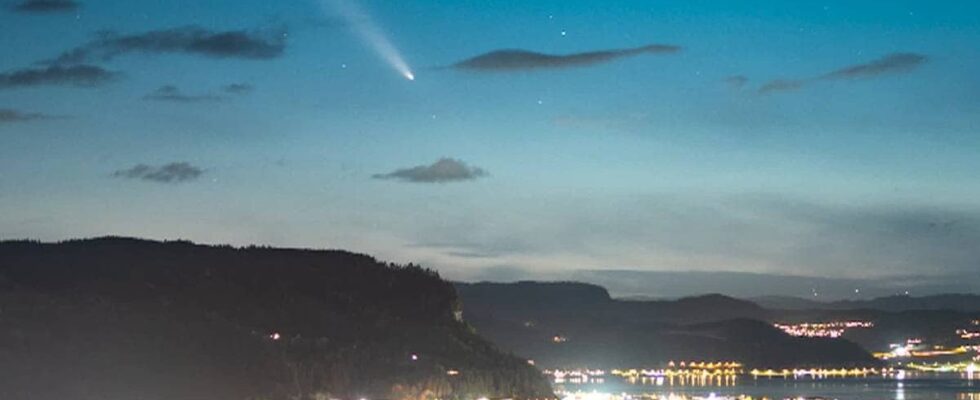A huge, dirty, snowball of frozen gas and dust is now hurtling through space at over 100,000 kilometers per hour in the “closeness” of the earth. The comet has the pleasant-sounding name C/2023 A3 Tsuchinshan-ATLAS. – This is a relatively large comet. It is estimated to be 2 kilometers in diameter. That’s what Håkon Dahle, who is a researcher at the Department of Astrophysics at the University of Oslo (UiO), says. Got a flash Several hobby photographers took the trip out on Monday evening to secure images of something that has never been seen from Earth before. Among them was Øivind Boge. He has been taking nature photos for ten years. – It was astronomy photography that got me started with photography. But it turned out to be easier to take pictures in daylight than in the middle of the night, says Boge and explains that he mostly takes pictures of nature and landscapes. On Monday evening, he nevertheless made the trip to the mountain Gråkallen in Trondheim in the hope of getting a picture of the comet. – This is the first time I have seen a comet and the first time I have received a picture of one. I was very satisfied, says Boge. Øivind Boge took this picture of comet C/2023 A3 Tsuchinshan-ATLAS from Gråkallen in Trondheim on Monday evening. Photo: Øivind Boge / Øivind Boge The long-distance comet The comet has come from the edge of the Heliosphere, which is the outer edge of where the sun has some effect on its surroundings in the form of its enormous gravity. The only things we humans have sent this far are the probes Voyager 1 and 2. But now it is on its first and last visit for us on earth. The comet will sooner or later disappear out of the heliosphere and into interstellar space. – It is about halfway between the earth and the sun now. Just under 75 million kilometres. Astronomically, it is quite close, says Dahle. Håkon Dahle is a researcher in cosmology at the University of Oslo. Here he visits an observatory in Hawaii. Photo: H.DAHLE So close that it can easily be seen with the naked eye. The video at the top of the story was taken with an ordinary photo camera and composed of 150 still images by the photographer Jørn Tømmerås. He started planning the picture the day before. – The picture was taken at Heimdal near Hegstadmoen. There is a place with a view to the west without obstacles, says Tømmerås. The photographer has been taking pictures for many years and for the last five years has been doing astro-photo, as it is called. Yesterday’s picture was, despite several attempts, the first he has taken of a comet. – It’s about keeping an eye on apps and being in the right place at the right time, he says. Tømmerås put together the timelapse at the top of 150 still images. Photo: Jørn Tømmerås Even though he has expensive photography equipment, he thinks it will be possible to take pictures of it with an ordinary mobile camera as well. – It’s amazing what you can achieve with them. You don’t need any expensive equipment to shoot, he says. Visible throughout Norway The last time a comet was as visible in Norway was when Comet McNaught passed us in 2007. If you want to experience the unusual sight, you only have a few days. – With the naked eye, it will be visible for about a week. It becomes weaker because it is moving away from the sun and the earth. But the visibility will not change dramatically from night to night, says Dahle. It is slightly more visible in southern Norway, but according to the researcher there is not a big difference for those who will see it in northern Norway. – Look to the west an hour and a half after sunset, is expert Dahle’s tip. Published 15.10.2024, at 11.34 Updated 15.10.2024, at 13.01
ttn-69
Got a flash of comet A3 over Trondheim – news Trøndelag – Local news, TV and radio

